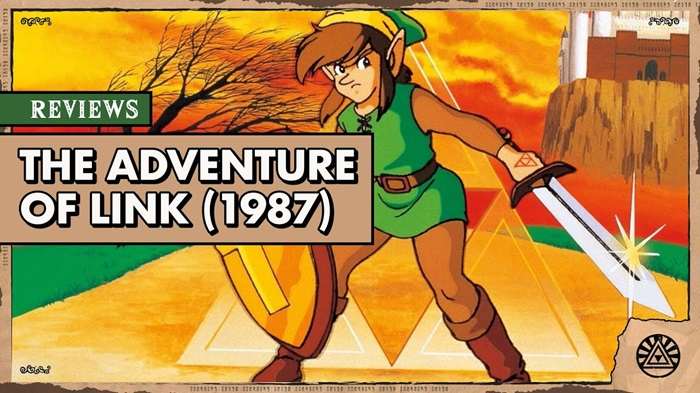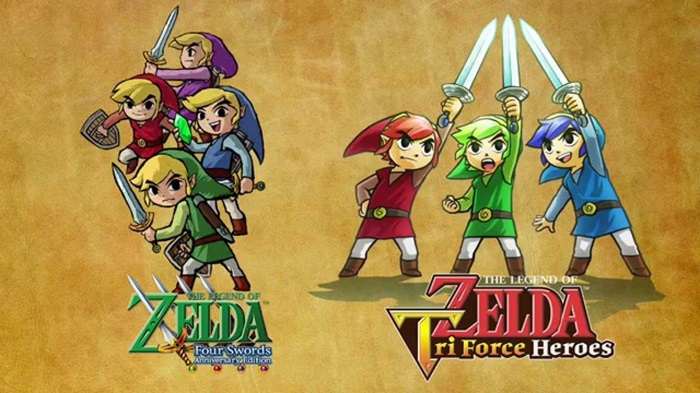The “Legend of Zelda” series is one of the most beloved franchises in gaming history. From its debut in 1986 to its latest entries, the series has captivated players with its intricate puzzles, engaging narratives, and iconic characters. In this article, we’ll embark on a comprehensive journey through the “Zelda” games in chronological order, exploring each title’s unique contributions to the franchise and its impact on gaming as a whole.
The Legend of Zelda (1986)
The Dawn of a Legend
The journey begins with the original “Legend of Zelda,” released for the Nintendo Entertainment System (NES). Created by Shigeru Miyamoto and Takashi Tezuka, this groundbreaking game introduced players to the fantasy world of Hyrule and its hero, Link.
Key Features:
- Open World Exploration: Unlike many games of its time, “The Legend of Zelda” offered a vast, non-linear world to explore.
- Puzzle Solving: Players encountered dungeons filled with puzzles and enemies, a hallmark of the series.
- The Triforce: The quest to rescue Princess Zelda and defeat the evil Ganon set the stage for the series’ central narrative.
Impact: This game laid the foundation for the series’ exploration and adventure elements, influencing countless games that followed.
The Adventure of Link (1987)

A Bold New Direction
Following the success of the original game, “The Adventure of Link” was released as a direct sequel. This installment took a different approach by incorporating side-scrolling platforming elements and RPG mechanics.
Key Features:
- Side-Scrolling Action: Unlike its predecessor, this game featured side-scrolling combat and platforming.
- Experience Points: Players could level up Link’s abilities, adding an RPG element to the gameplay.
- Overworld Map: The game featured an expansive overworld map with towns and dungeons.
Impact: Although “The Adventure of Link” was less well-received compared to the original, its experimental design elements contributed to the series’ evolution.
3. A Link to the Past (1991)
A Return to Form
“A Link to the Past” marked a return to the top-down perspective and is often considered one of the greatest games in the series. Released for the Super Nintendo Entertainment System (SNES), it expanded on the original’s formula with deeper mechanics and a rich storyline.
Key Features:
- Dual Worlds: The game introduced the concept of parallel worlds, the Light World and Dark World.
- Expanded Inventory: Players could use a wide variety of items and abilities to solve puzzles.
- Rich Narrative: The story delved deeper into the lore of Hyrule and introduced the iconic Master Sword.
Impact: This game is credited with refining the series’ formula and setting the standard for future Zelda titles.
Link’s Awakening (1993)
A Portable Adventure
“Link’s Awakening” brought the magic of Zelda to the Game Boy. This portable adventure was notable for its inventive design and engaging gameplay.
Key Features:
- Dreamlike Setting: The game took place on the mysterious Koholint Island, a departure from Hyrule.
- Cameos and References: Players encountered characters and items from other Nintendo franchises, adding a unique twist.
- Portable Innovation: Despite the limitations of the Game Boy, the game offered a rich experience similar to its console counterparts.
Impact: “Link’s Awakening” demonstrated that Zelda could thrive on portable systems, paving the way for future handheld entries.
Ocarina of Time (1998)
A Revolution in 3D
“Ocarina of Time,” released for the Nintendo 64, is widely hailed as one of the greatest video games of all time. It marked Zelda’s transition to 3D and introduced numerous innovations that would become staples of the series.
Key Features:
- 3D World: The game featured a fully realized 3D world, setting a new standard for open-world design.
- Time Travel: Players could switch between a young and adult Link, adding depth to the gameplay.
- Ocarina of Time: The titular ocarina allowed players to manipulate time and weather, adding a unique gameplay mechanic.
Impact: “Ocarina of Time” revolutionized 3D gaming and is often credited with shaping the future of action-adventure games.
Majora’s Mask (2000)
A Darker Tale
Following “Ocarina of Time,” “Majora’s Mask” continued Link’s journey with a darker and more complex story. It introduced a unique time-based mechanic that set it apart from its predecessor.
Key Features:
- Time Mechanic: The game featured a three-day cycle that players had to manage to prevent the moon from crashing into the world.
- Masks and Transformation: Link could use various masks to transform into different characters, each with unique abilities.
- Side Quests: The game is known for its extensive side quests and deep character interactions.
Impact: “Majora’s Mask” is remembered for its emotional depth and innovative time-based mechanics, offering a distinct experience from other Zelda games.
The Wind Waker (2002)
A Bold Artistic Shift
“The Wind Waker” marked a significant departure from the series’ traditional visual style. Released for the GameCube, it featured a cel-shaded art style that was both controversial and beloved.
Key Features:
- Cel-Shaded Graphics: The game employed a distinctive cel-shaded art style, giving it a unique and timeless look.
- Open-Sea Exploration: Players navigated a vast ocean, discovering islands and hidden secrets.
- Wind Mechanics: The game introduced wind-based mechanics, influencing exploration and puzzle-solving.
Impact: “The Wind Waker” demonstrated the series’ ability to evolve artistically while maintaining its core gameplay elements.
Twilight Princess (2006)
A Return to Realism
“Twilight Princess” marked a return to a more realistic and darker tone, contrasting with the whimsical style of “The Wind Waker.” Released for the GameCube and Wii, it was praised for its mature narrative and immersive world.
Key Features:
- Realistic Graphics: The game featured a more realistic art style, offering a darker atmosphere.
- Wolf Transformation: Link could transform into a wolf, adding new gameplay elements and abilities.
- Epic Storyline: The game featured a rich narrative with deep character development and a compelling antagonist.
Impact: “Twilight Princess” balanced the series’ traditional elements with new mechanics and a darker tone, appealing to both new and longtime fans.
Phantom Hourglass (2007)
Touchscreen Innovation
“Phantom Hourglass” brought the Zelda experience to the Nintendo DS, utilizing the console’s touchscreen to offer new gameplay mechanics and control schemes.
Key Features:
- Touchscreen Controls: Players used the DS touchscreen to control Link’s movements and interactions.
- Seafaring Adventure: The game continued the nautical theme of “The Wind Waker,” with new islands and puzzles to explore.
- Temple of the Ocean King: A challenging dungeon that required players to revisit and master its mechanics.
Impact: “Phantom Hourglass” demonstrated the potential of touchscreen technology in expanding gameplay possibilities.
Spirit Tracks (2009)
A New Journey
“Spirit Tracks” continued the DS era of Zelda games, introducing a new setting and innovative gameplay features.
Key Features:
- Train Travel: Players navigated the world using a steam train, adding a unique travel mechanic.
- Cooperative Gameplay: The game featured a spirit companion, offering cooperative puzzle-solving elements.
- New Setting: The game took place in a new land with its own lore and challenges.
Impact: “Spirit Tracks” continued the DS Zelda legacy with inventive mechanics and a fresh setting.
Skyward Sword (2011)
A Celestial Adventure
“Skyward Sword” was released for the Wii and explored the origins of the Zelda universe. It featured motion controls and a story that set the stage for the entire series.
Key Features:
- Motion Controls: The game utilized the Wii’s motion controls for swordplay and puzzle-solving.
- Sky Islands: Players explored floating islands and ventured to the surface world.
- Origins of Zelda Lore: The game delved into the origins of key elements in the Zelda universe.
Impact: “Skyward Sword” offered a fresh perspective on the series’ lore and experimented with new control schemes.
A Link Between Worlds (2013)
A Timeless Classic
“A Link Between Worlds” was released for the Nintendo 3DS and served as a spiritual successor to “A Link to the Past,” featuring a new take on classic mechanics.
Key Features:
- 2D/3D Transition: The game blended classic 2D gameplay with 3D graphics, maintaining the feel of earlier titles while modernizing the visuals.
- Ravio’s Shop: Players could rent or buy items, adding a new economic element to the game.
- Wall Merging: Link could merge into walls to solve puzzles and navigate the world.
Impact: “A Link Between Worlds” successfully modernized classic Zelda gameplay while honoring the series’ roots.
Tri Force Heroes (2015)

A Cooperative Adventure
“Tri Force Heroes” focused on cooperative multiplayer gameplay, allowing players to team up and tackle challenges together.
Key Features:
- Three-Player Co-op: Players could team up with two friends to solve puzzles and defeat enemies.
- Costume Abilities: The game featured a variety of costumes that granted unique abilities.
- Dungeon Challenges: Players worked together to complete dungeons and challenges.
Impact: “Tri Force Heroes” highlighted the series’ cooperative potential and provided a fresh multiplayer experience.
Breath of the Wild (2017)
A Revolutionary Open World
“Breath of the Wild” is often hailed as one of the greatest games of all time. It revolutionized the open-world genre and set new standards for exploration and freedom.
Key Features:
- Open-World Exploration: The game featured a vast, seamless world with unprecedented freedom of exploration.
- Dynamic Weather and Physics: Players experienced dynamic weather and realistic physics, influencing gameplay and puzzle-solving.
- Nonlinear Progression: The game allowed players to approach challenges in any order, offering a highly flexible experience.
Impact: “Breath of the Wild” redefined open-world gameplay and set a new benchmark for future games in the series and beyond.
Tears of the Kingdom (2023)
A New Chapter
“Tears of the Kingdom” continued the epic saga with new adventures and innovations, expanding on the foundation laid by “Breath of the Wild.”
Key Features:
- Enhanced Open World: The game built upon the open-world design of its predecessor with new mechanics and expanded areas.
- Innovative Gameplay: Players encountered new abilities and features that further enriched the exploration and combat experience.
- Continuing the Saga: The game continued the story from “Breath of the Wild,” adding depth to the overarching narrative.
Impact: “Tears of the Kingdom” cemented the series’ reputation for innovation and excellence, continuing to push the boundaries of gaming.
Related Post:
Exploring “Run 3 Unblocked Games”: A Cosmic Adventure
The Ultimate Guide to Tomb Raider Games in Order: A Journey Through Lara Croft’s Legacy
The Cast of Love Island Games: Meet the Vibrant Personalities Behind the Show
The “Legend of Zelda” series has undergone incredible evolution since its inception. From the 2D explorations of the 1980s to the revolutionary open-world experiences of the 2010s and beyond, the franchise has continuously pushed the boundaries of what games can achieve. Each title has contributed to the rich tapestry of Hyrule’s history, offering players unforgettable adventures and timeless experiences. As we look forward to future installments, one thing remains certain: the legend will continue to captivate and inspire generations of gamers.


